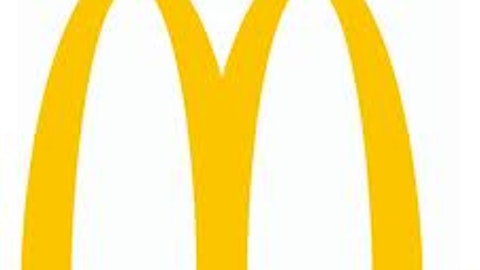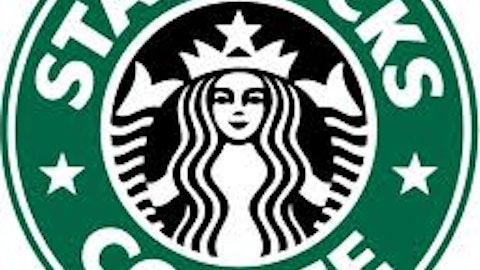The Motley Fool has been making successful stock picks for many years, but we don’t always agree on what a great stock looks like. That’s what makes us “motley,” and it’s one of our core values. We can disagree respectfully, as we often do. Investors do better when they share their knowledge.
In that spirit, we three Fools have banded together to find the market’s best and worst stocks, which we’ll rate on The Motley Fool’s CAPS system as outperformers or underperformers. We’ll be accountable for every pick based on the sum of our knowledge and the balance of our decisions. Today, we’ll be discussing Starbucks Corporation (NASDAQ:SBUX), the world’s largest coffee-shop chain.
Starbucks by the numbers
Here’s a quick snapshot of the company’s most important numbers:
| Statistic | Result (TTM or Most Recent Available) |
|---|---|
| Market cap | $44.3 billion |
| Price/book | 8.5 |
| Price/sales | 3.2 |
| Forward P/E | 22.6 |
| Cash/debt | $2.46 billion / $0.55 billion |
| Total stores | 18,278 |
| Revenue breakdown (mrq) | Americas: $2.84 billion Channel Development: $0.38 billion Europe/Middle East/Africa: $0.31 billion China/Asia Pacific: $0.21 billion |
| Competitors | Dunkin’ Brands (NASDAQ:DNKN) Green Mountain Coffee Roasters (NASDAQ:GMCR) |
Sources: Yahoo! Finance, Starbucks 10-Q. mrq = most recent quarter.

Source: Wikimedia commons.
Sean’s take
There’s not much to say about Starbucks that its first-quarter earnings report in January didn’t already spell out for investors. China is a hot spot of growth, with the China/Asia Pacific region delivering 28% revenue growth, while global same-store sales throughout the remainder of the company remain strong — up 6%, thanks to incredible branding, increase traffic, solid pricing power, and a knack for staying ahead of the innovative curve.
Earlier this week, I broke down Starbucks Corporation (NASDAQ:SBUX)’ outperformance into three rudimentary building blocks. I saw the company first as an innovator that remodeled and refreshed its stores to make them more inviting and reworked its food line to appeal to healthier eaters.
Next, I envisioned Starbucks as an emulator that saw a concept from another vendor and ran with it. This is what prompted Starbucks to develop its own single-serve brewing and espresso machine known as the Verismo to take on Green Mountain’s dominant Keurig system, and this is also what drove it to emulate Whole Foods Market, Inc. (NASDAQ:WFM) by striking deals with local and organic growers to bring more nutritious food choices and drinks into its stores.
Finally, I saw the collaborative side of Starbucks Corporation (NASDAQ:SBUX) that keeps its friends close and its enemies closer. When Dunkin’ Brands formed a strategic partnership with Green Mountain in February 2011, Starbucks followed suit just weeks later with a partnership of its own with Green Mountain.
Click here if you’d like to read a more thorough analysis of my thoughts on Starbucks, but the simple answer is that yes, it’s a buy, even now. Starbucks is a dominant force in coffee that refuses to be stopped, and there is plenty of room for it to grow overseas, or even expand sales domestically through new food and drink offerings.
Alex’s take
I took a more fundamental look at Starbucks Corporation (NASDAQ:SBUX)’ opportunity than Sean, which is a rarity — usually he’s the one who comes at the stock with a bunch of numbers that I hadn’t considered. My thoughts on Starbucks were pretty straightforward heading in. Sure, it’s a highly valued stock, but it’s been highly valued relative to the rest of the market for years. If there’s not a reason, then the market must be wrong. So, is the market wrong?
| Company | P/E Ratio | Net Margin | Trailing 12-Month Earnings Growth |
|---|---|---|---|
| Starbucks | 31.8 | 10.5% | 11.9% |
| Dunkin Brands | 42.5 | 16.5% | 214.5% |
| Green Mountain | 24.9 | 9.1% | 21.3% |
| McDonald’s (NYSE:MCD) | 19.3 | 19.8% | (0.7%) |
Sources: YCharts and Yahoo! Finance.
Starbucks is doing better than McDonald’s, which has been trying its level best to expand beyond cheap burgers and McNuggets into the coffee “experience,” at least in terms of earnings growth. It’s not growing as fast as Dunkin — but that improvement should be heavily discounted, as the doughnut maker has only a few quarters of reported earnings so far. It gets an advantage over Green Mountain probably on the strength of brand presence and a high net margin for operating so many retail beverage stores. More importantly, it’s not overvalued relative to itself. The company’s two-year average valuation is fewer than three points below its current valuation.


